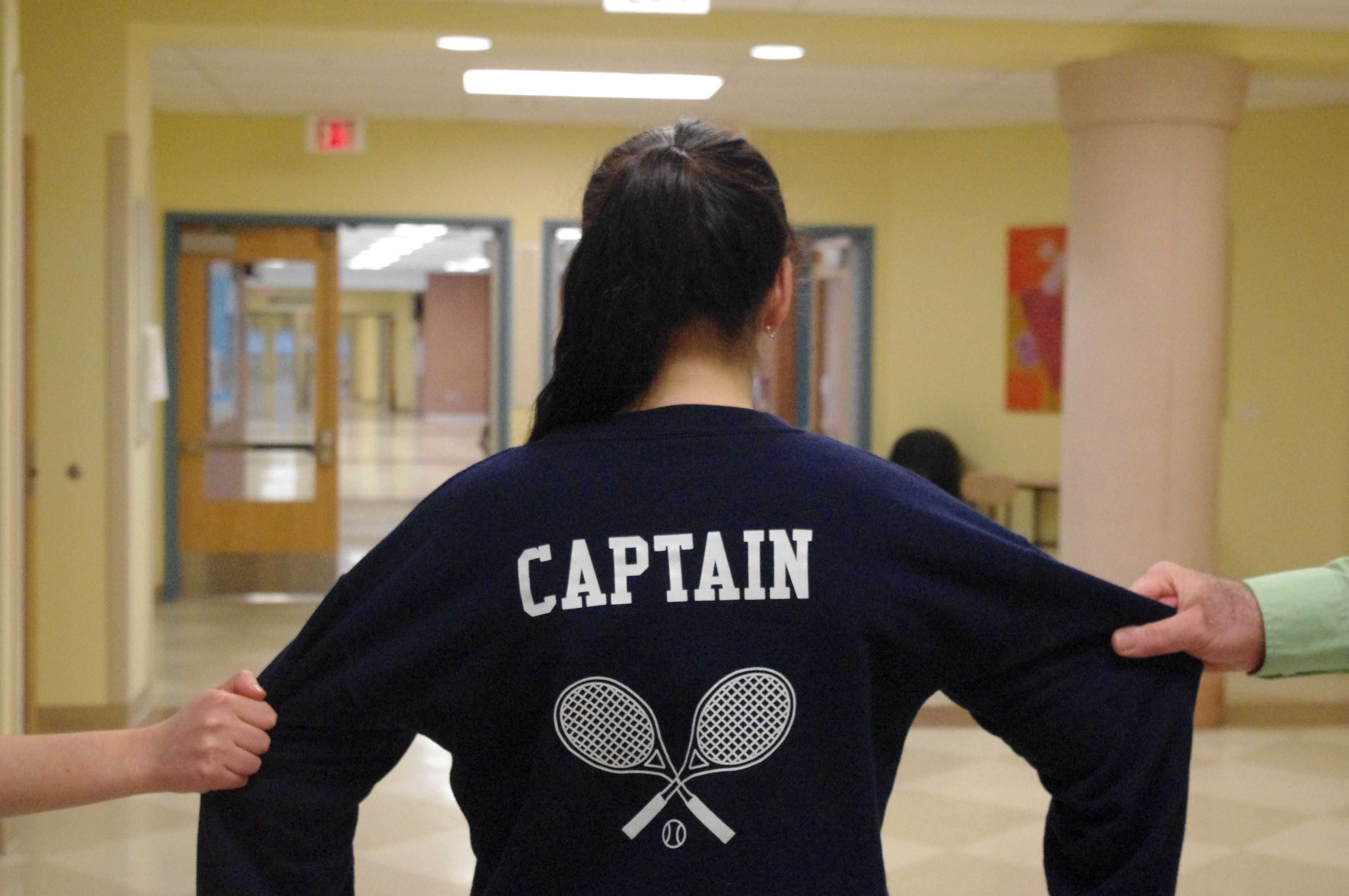
In addition to the academic trials of standardized testing and grueling coursework, juniors often encounter competition of another sort—the quest to obtain the title of “captain” in varsity athletics.
However, issues surrounding the captainship process—parental involvement, complaints from athletes, an absence of regulation regarding the number of captains per team, and the multitude of different methods used by athletic teams to determine captains—have prompted Athletic Director Marty Lisevick to draft a new protocol outlining the manner and format in which athletes may become captain.
The responsibilities of a captain, according to Lisevick, include representing his or her team on and off the field, providing leadership to other players, and holding a high standard of sportsmanship and general ethics.
The format of the yearly proccess to gain the title, which are currently subject to the discretion of each sports coach at Staples, takes many forms. Some captains are appointed directly by the coach. On other teams, candidates are nominated by the players and then selected by the coach, or, alternatively, voted in by the players. And in some programs, like the boys’ soccer team—coached by Dan Woog— the players vote for their captains directly.
One aspect of the boys’ soccer team’s vote for captains that makes it unique among Staples sports teams is that all varsity players from the previous year, including graduating seniors, vote. According to Woog, this is done because seniors have less of a personal interest in who becomes captain, and are thus more likely to make decisions that they truly believe would be in the best interest of the team as a whole.
However, while Woog contends that his team’s captain selection system is the best format for the soccer team, he acknowledges that the process is not without its flaws.
“There is no failsafe method to pick captains. I’d say that 80 percent of the captains the team votes in are good choices—leaders with strong values and good communication skills. The remaining 20 percent happen when kids vote based upon personalities or petty conflicts,” Woog said.
Yet, Woog believes that the captainship process has taken a hypercompetitive bent in recent years, especially because of increased parental involvement in youth sports.
“Parents often do attempt to lobby for students to receive the title of captain, and that type of involvement takes many forms. It didn’t used to mean so much to parents as it does today, but it’s understandable why they try to influence the decision as of recent. Two significant reasons are that parents are generally more involved in extracurricular activities and parents feel pressured to assist their child in the college process,” Woog said.
According to Principal John Dodig, coaches should not, in theory, bend to the whims of parents regarding their child’s chances for captainship.
“Each year, there are a number of complaints, usually from parents, but sometimes from the kid, about the captainship process, usually because the individual in question didn’t win the title. The coach ought to say to the parent, ‘thanks for sharing, but it has no bearing’ [upon my decision],” Dodig said.
Nonetheless, Westport parents have continued to demonstrate an interest in complicating the drama surrounding the selection of team captains. According to an incoming captain on a varsity girls team, who will remain anonymous due to the nature of the subject, another prospective captain became embittered after the involvement of her parents yielded no captain title.
“We had a junior this year who really wanted to be a captain. Her parents helped with a lot of the preparations for Senior Night, with the expectation that the coach would give her the captain position—and he didn’t,” she said.
However, in some instances, the combination of parental involvement and an athlete’s dissatisfaction with not getting the captain position can lead to a problem situation in which a disproportionate number of seniors become captain.
Some athletes, such as incoming field hockey captain Emily Ashken ’12, believe that the lack of official procedure in the captainship process naturally leads to controversy surrounding the player selections that a coach or a team makes.
“In looking at our roster for next season, our team is going to have five senior captains and eight seniors in total. With this in mind, as long as there is no protocol in place, athletes have every right to question who is selected to be a captain,” Ashken said.
Recognizing the flaws associated with the race for captainship, Dodig believes that reform is necessary—especially regarding the number of captains that can be on a varsity team.
“There is one team in which the number of senior captains is close to the number of seniors on the team. That leaves a lot of questions for the athletes that didn’t get the title. Because of this, about a month and a half ago I suggested to [athletic director] Marty Lisevick that Staples athletics could adopt a “graduated limit” by which the number of team captains is determined by the number of players on the team. For example, a 20-player team could have a limit of two captains,” Dodig said.
According to Lisevick, a new athletic protocol is being developed to combat the current problems associated with the captainship process. Though it is currently in the development stages, it includes both a limit on the number of captains per team, as conceived by Dodig.
“It has become clear that the process has become flawed. We get kids who come in and complain that they weren’t selected to be captain while a majority of the incoming seniors were, or that other athletes lobbied their way into a captain position, or even that parents involved themselves in the coach’s decision. The new protocol seeks to correct and address these issues,” Lisevick said.
Lisevick also emphasized that the goal of the new procedure would not be to limit the decision-making power of athletic coaches, but merely to prevent abuses of power in regards to naming captains.
“I once removed a coach who manipulated the vote by naming the first and fourth most popular candidates as captains, essentially by passing the second and third most popular. Naturally, many of the players on the team came to my office to complain—and because I currently collect all of the ballots for teams that vote, it was an easy check, and they were right,” Lisevick said.
In part because of this instance, Lisevick believes that all that all teams should determine captains by popular vote, and has implemented that concept in the protocol.
“If all teams voted with written ballots, it would be much easier to solve the problems that currently plague the captainship process,” Lisevick said.
However, some coaches, such as girls’ lacrosse coach Cathy Schager, whose team already uses a vote-based captain selection system, believes the protocol does little to change how her team will operate in the future.
“As to the protocol, I’m completely neutral. Since we already vote and have a limit on the number of captains that the team can elect, the impact of any official changes will most likely be quite small,” Schager said.
Regarding the implementation of the new protocol, Lisevick is confident that it will appear in formal writing by the winter season of next year.
“I’ve proposed a lot of the ideas in the new protocol to the spring season coaches, and they have generally showed strong support. The next step is presenting the protocol to the fall and winter coaches. It should be implemented by next winter at the latest,” Lisevick said.












































